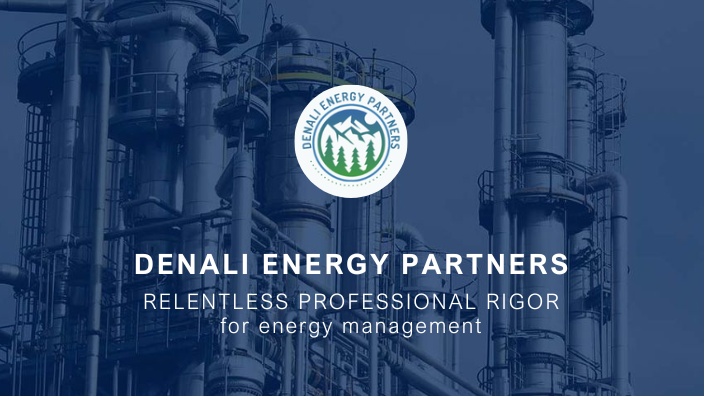Projections of Electricity Demand and Supply in Mexico and Their Impact on Industrial Parks
Denali-ep
| 23 de octubre de 2024
Projections of Electricity Demand and Supply in Mexico and Their Impact on Industrial Parks
Introduction
Electricity demand and supply projections in Mexico are vital for the future of industrial parks. These spaces, which house numerous companies, rely on a reliable and affordable power supply to maintain their competitiveness in the global market. In this article, we will explore the most relevant projections and their impact on industrial parks, along with strategies and opportunities to address these challenges.
Projections of Electricity Demand in Mexico
Electricity demand in Mexico is expected to grow significantly in the coming years, driven by various factors.
Projected Growth in Electricity Consumption
According to the National Electric System Development Program (PRODESEN) 2023-2037, net electricity consumption in Mexico is projected to reach approximately 470,987 GWh by 2037. This represents a 41.2% increase compared to 2022 levels when consumption was at 333,662 GWh.
Drivers of Demand
Key drivers of electricity demand include the growth of industrial activity, digitalization, and process automation. These technological and market shifts require higher energy consumption to remain competitive.
Average Annual Growth Rate
PRODESEN estimates that the average annual growth rate for electricity demand will be 2.3% under a base scenario. This projection underscores the need for constant expansion in generation capacity to meet future needs.
Projections of Electricity Supply
To meet growing demand, Mexico must significantly expand its electricity generation capacity. PRODESEN outlines the guidelines to achieve this, with a particular focus on renewable energy sources.
Expansion of Generation Capacity
The country’s electricity generation capacity is expected to increase significantly in the coming years, involving the construction of new power plants and modernization of existing infrastructure.
Focus on Renewable Energy
Mexico’s government has reaffirmed its commitment to energy transition, placing greater emphasis on renewable energy. The share of these sources in the energy mix is expected to increase over time.
Regulatory Challenges
Despite efforts, there are regulatory challenges that could hinder the achievement of clean generation targets. Current regulatory changes may not be sufficient to reach these goals without adequate infrastructure investment.
Impact on Industrial Parks
Electricity demand and supply projections directly impact industrial parks, which must adapt to this new energy landscape.

Reliable Power Supply
With rising demand, it is crucial for industrial parks to have a reliable and uninterrupted power supply. Power outages can lead to production halts, affecting profitability and competitiveness.
Need for Infrastructure Investment
To meet projected demand, significant investments in transmission and distribution infrastructure are necessary. A lack of investments in these sectors may limit the growth of industrial parks and their ability to attract new investments.
Rising Operational Costs
As demand increases, energy costs are likely to rise as well. This presents a challenge for industrial parks that already face cost pressures in a competitive environment. Companies will need to optimize their energy consumption and explore alternatives such as distributed generation.
Sustainability Push
The projected increase in clean energy generation capacity also presents opportunities for industrial parks. Companies that invest in sustainable technologies will not only comply with stricter environmental regulations but also reduce long-term costs and enhance their image with consumers.
Strategies to Address Projections
To address the projections of electricity demand and supply, industrial parks must adopt strategies that improve energy efficiency and diversify their power sources.
Energy Efficiency
Implementing energy efficiency measures, such as installing more efficient equipment and optimizing processes, can help companies reduce their electricity consumption and save on operational costs.
Distributed Generation
Distributed generation, particularly through renewable sources like solar energy, allows companies to generate their own electricity and reduce their reliance on the national grid. This not only improves supply reliability but also contributes to sustainability.
Public-Private Collaboration
Collaboration between the public and private sectors is crucial to addressing energy challenges. Strategic partnerships can facilitate infrastructure investment, promote clean technology adoption, and develop innovative solutions for the industrial sector.
Success Stories
There are inspiring examples of industrial parks that have adopted successful strategies to address electricity demand and supply projections.
Leading Sustainable Industrial Parks
Some industrial parks have implemented sustainable practices, such as renewable energy generation and energy efficiency measures, becoming leaders in the sector. These efforts not only reduce their carbon footprint but also improve their competitiveness in the market.
Innovative Clean Energy Projects
Public-private collaboration has led to innovative clean energy projects, such as the construction of solar and wind farms. These projects not only increase generation capacity but also foster innovation and technological development in the energy sector.
Challenges and Opportunities
The electricity demand and supply projections present both challenges and opportunities for industrial parks.
Regulatory and Political Challenges
Changes in the regulatory framework and energy policies can affect industrial parks' ability to adapt to the projections. Policymakers and regulators must work closely with the private sector to create an investment-friendly and innovation-driven environment.
Technological Advances
Technological advancements, such as energy storage and energy system automation, offer new opportunities to improve energy efficiency and supply reliability. Industrial parks must stay aware of these innovations and be ready to adopt them to remain competitive.
Conclusion
The projections of electricity demand and supply in Mexico present both challenges and opportunities for industrial parks. To overcome these challenges, companies must adopt strategies for energy efficiency, distributed generation, and public-private collaboration. By leveraging the opportunities provided by clean energy and technological advances, industrial parks can position themselves as leaders in sustainability and competitiveness in the global market.
How will the projected increase in electricity demand affect industrial parks in Mexico?
Industrial parks will need to adapt to the growing demand by ensuring a reliable and uninterrupted power supply. Increased electricity consumption may lead to higher operational costs and require significant investments in energy infrastructure to prevent supply disruptions, which could impact production and competitiveness.
What role do renewable energy sources play in Mexico’s electricity supply projections?
Renewable energy sources, such as solar and wind, are expected to play a key role in Mexico’s future energy mix. The government is focusing on increasing the share of clean energy, which presents opportunities for industrial parks to adopt renewable energy solutions, reduce long-term energy costs, and improve their environmental footprint.
What challenges do industrial parks face with rising energy costs?
Rising energy costs pose a challenge to industrial parks, as they can erode profitability and reduce competitiveness. To address this, companies must implement energy efficiency measures and explore alternative energy sources like distributed generation to reduce reliance on the national grid and control energy expenses.
How can industrial parks enhance energy reliability and sustainability?
Industrial parks can enhance energy reliability by investing in distributed generation systems, such as on-site solar or wind power, and improving energy efficiency through optimized processes and modern equipment. Embracing renewable energy sources can also help reduce carbon emissions and support sustainability goals.
What are the main regulatory challenges facing Mexico’s energy sector?
Regulatory challenges include the need for updated infrastructure and clear policies to support renewable energy growth. Changes in regulations, without adequate infrastructure investment, may hinder the transition to cleaner energy sources, affecting industrial parks' ability to meet both demand and sustainability goals.




